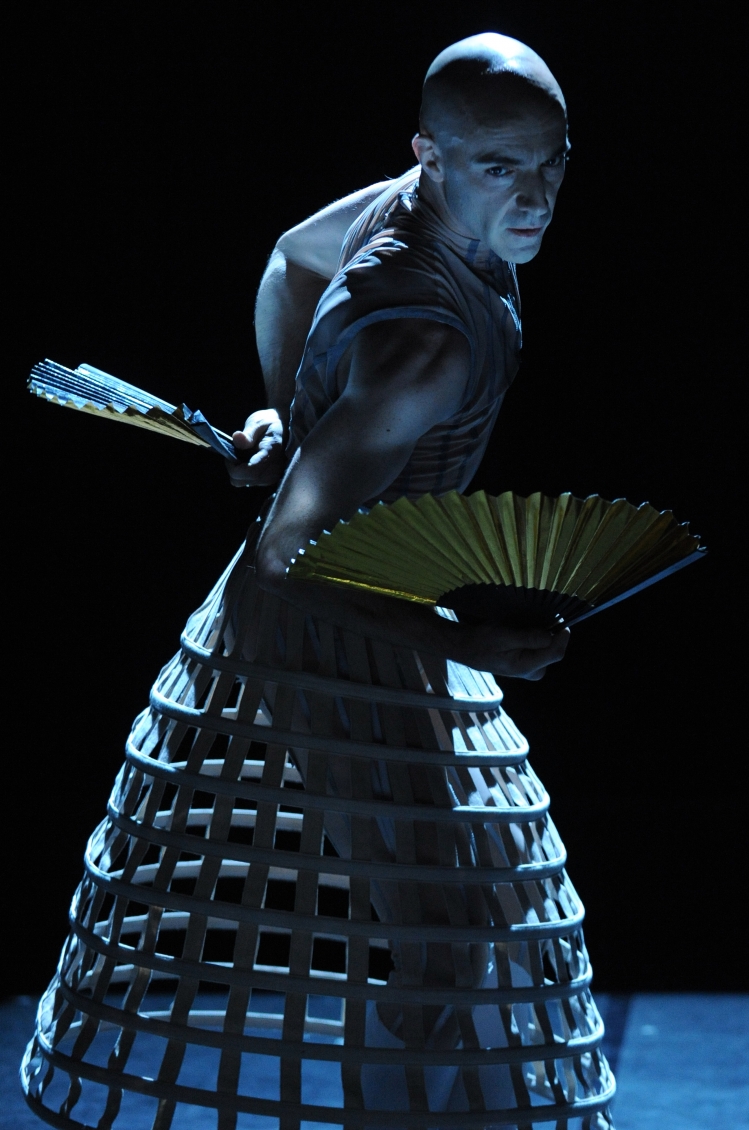Eonnagata: a meditation rather than an exploration

Few would dispute the fact that Robert Lepage is Canada’s most celebrated stage director, and a global brand unto himself. Lepage is such a powerhouse that it is quite surprising to see him take on a far less dominant and much more vulnerable role in the multidisciplinary spectacle that is Eonnagata. This is not to say that Lepage is unaccustomed to a collaborative creative process, in fact he is the first to admit that his company, Ex Machina, is littered with artistic minds in whose instincts he trusts. Eonnagata is nevertheless a departure for Lepage - although given the eminence of his co-creators (dancers and choreographers, Sylvie Guillem and Russel Maliphant), it is no doubt a comfortable departure.
Presented at the newly renovated Sony Centre, Eonnagata blends together theatre, contemporary dance, puppetry, and era-appropriate chamber music to tell the story of the Chevalier d'Éon, an 18th century French spy who lived his life as both a man and a woman for decades at a time, and whose biological sex remains shrouded in controversy even to this day due to conflicting medical reports. Lepage, Guillem, and Maliphant not only conceived and shaped the production together, but perform it too, stretching the dramatic legs of Guillem and Maliphant, and more literally stretching Lepage’s legs in his unexpected turn as a dancer.
The trio choose not to dwell on the narrative of their protagonist (a summary of his biography is presented as a monologue early on in the production to put the rest of the scenes in context) but rather they focus on the questions of gender, identity, and belonging that his story raises. Whether this is a mistake or not given Eon's fascinating and eventful life is a matter of taste.
While works with an ethereal quality can be as provocative and engaging as any straightforward story - if not more so - this production skirts the designation of 'underwhelming'; it is perhaps more aptly described as a meditation upon an idea rather than an exploration of one (somewhat surprising given Lepage's demonstrated ability to dissect a theme twenty different ways, such as in his epic Lipsynch). This is in large part due to the choreography which, while pleasant, elegant, and often bold, suffers from an emotional sterility which woos on an intellectual level but leaves the gut wanting. There are, however, notable exceptions, such as a scene in which the lifeless body of Eon (played at that moment by the perpetually captivating Guillem) is manipulated and animated by her stage-mates using a pair of flexible poles. Another scene involving a mirror topped table, and one very discreet stagehand, indulges the audience with illusions of levitation and strong male/female imagery.
Fortunately the production value and directorial flair of Eonnagata is an accomplishment unto itself, and more than enough to deem it a rewarding experience. Some very Lepage-esque visuals - such as a beautiful scene in which Guillem interacts with an enormous and translucent costume in silhouette behind a shadow screen, creating a play of light and dark, depth and density - are highlights, as are the lighting and costumes. Michael Hulls' lighting design runs the gamut from atmospheric washes to striking strobes, all while tactfully supporting the action on stage. The late great fashion icon Alexander McQueen lent his hand to the costume design, creating conservative but graceful and eye-catching outfits for the three stars.
Eonnagata may not excel on every level but it a remarkable work and does manage to occasionally mesmerize. The very fact that it was assembled by three established artists working outside of their comfort zones is itself notable; many are willing to take risks in the pursuit of success, but to have already obtained success and yet continue to take risks is the hallmark of a true artist.



